by Dedra L. Stevenson
I’ve had the pleasure of knowing Sol for many years in UAE, and I’ve always known there was something special about her, but now that I’ve had the chance to work with her, I see it clearly. This inspirational woman is here to ignite imaginations and spark creative expression in everyone she meets.
Sol has gone on to offer something totally unique, from a teacher that’s got world class credentials and, since she specializes in experimental theatre, she’s often the ground zero of original ideas. No imitation or limitation can dampen her spirit because she can come up with something inventive in a split-second.
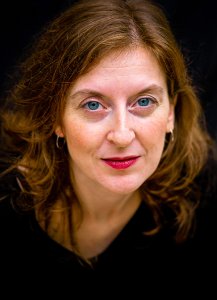
Sol Abiad, Theatre Director, Sorbonne University, Abu Dhabi and Founder of Star Too.
The Covid 19 pandemic drove the world to its knees, crushed economies, and forced the entire world to rethink what’s important and what’s not. Even now, as we struggle to rebuild some of what’s been torn down, it’s left many people depressed, lonely, and distraught. We’re simply out of patience and now and then the walls of our isolation feel as though they are closing in.
Before the pandemic, Sol was on the cusp of reviving Dubai’s first experimental theatre project, the STAR TOO collective, founded in 2010. When we were all driven into our homes, it seemed as though that wouldn’t be possible. Not for Sol, not for an out of the box thinker like her. She began to investigate delivering an innovative syllabus via Zoom.
The first course is almost complete, and the students have only praise for what they’ve experienced. One student reported, “I’ve been so happy being near this gaggle of creatives every week. It’s the shot in my art that I needed!” Another said, “I never imagined that I’d write and plan a theatrical presentation, but I’m beginning to see myself this way. I think I can do it now.
I’ve been there too, each week, and I can say that no matter how trapped and sad I felt during the week, I got a serious lift out of being around other creatives. As an author, I’m always taken away from the harshness of life by working on my books and screenplays, but this was a whole new level, as we have creatives from many backgrounds and nationalities in the group—actors, stage managers, producers, and even an architect!
Each week, I felt the life come back into my creative spirit as I spent time learning about experimental theatre. Now, even I aspire to write a theatrical piece soon.
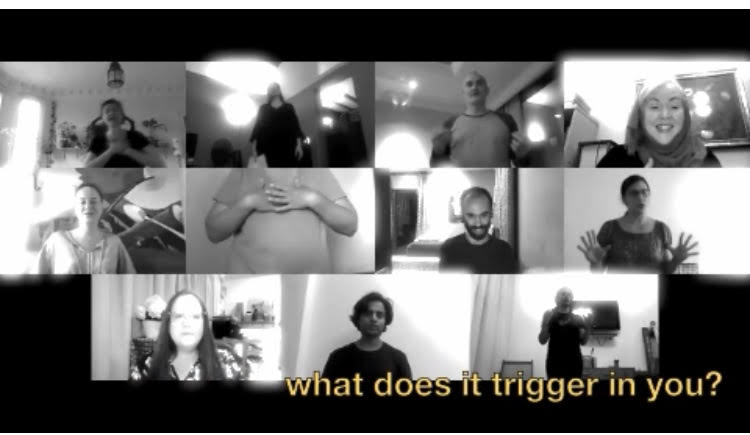
Who is Sol Abiad? I had the opportunity to interview her, and this is what she had to say. Enjoy!
Tell us about your background.
I’m French-Lebanese, and I first arrived in the U.A.E. in 1984. Some three decades ago, I had to go abroad to finish my studies. It is hard to imagine circumstances being at all similar today with top Universities now within reach. But back then I did have to leave and live with my grandparents in Paris. My grandfather was a Spanish composer and my grandmother, of Breton origins, was a pianist. They met in their youth at the national conservatory for music. They were aficionados of fine arts, history, philosophy, and literature, particularly science fiction. Their library and overall household were filled with arts and music. When I was young in the U.S., I had already taken art and ballet classes outside of school for several years but finishing my studies while living at my grandparents’ home in Paris really sealed my fate.
All that effort led to my studying philosophy and drama in Canada and pursuing graduate studies in theatre in the U.K. I briefly studied journalism in the hope of doing something more practical when I returned to the Emirates in the new millennia, but then I was once again drawn back to theatre when I heard of Ariane Mnouchkine’s new ateliers at Theatre du Soleil. Attending her workshop inspired me to launch Dubai’s first experimental theatre project, STAR TOO, in 2010.
It was shortly thereafter that I started teaching and directing theatre productions at Sorbonne University in Abu Dhabi. Apart from a great number of psychologists in the family, I also grew up surrounded by educators. So, teaching was never far from my mind. Whether directing or teaching, I think both practices involve transmitting and there is little more rewarding than sharing a love for theatre.
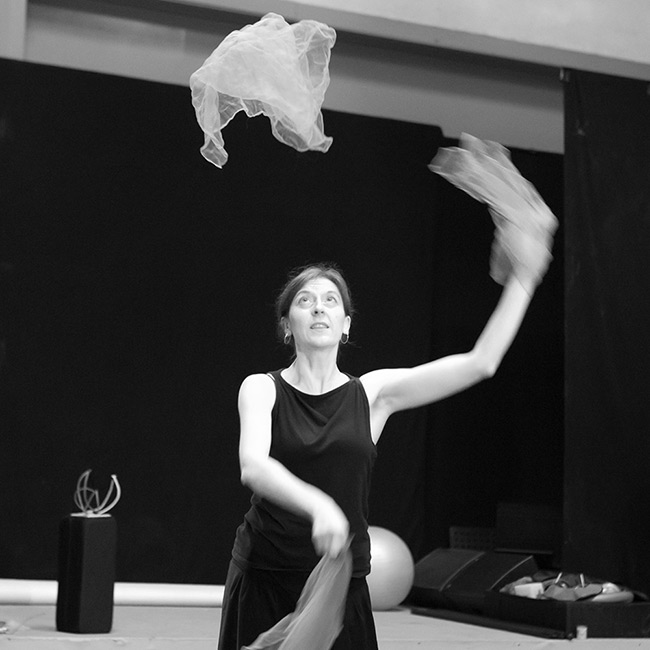
When did you fall in love with theatre?
During elementary and middle school, I was in the typical school play and never missed an opportunity to perform, including dancing.
With a love for music, visual arts, and movement, I was thrilled to find that my high school in Paris offered an International Baccalaureate classes in theatre.
My I.B. teacher was a founding member of the International Schools Theatre Association (with festivals now held worldwide, including in the U.A.E.) and we were introduced to the profound ensemble concept.
Our class was brought to Peter Brook’s theatre and I saw a Deborah Warner production that stole my heart forever. By 11th grade, theatre was all I wanted to do, and in the most sacred way.
The sanctity of the playing space, the spirit of the object and the connection between partners were singed in my soul as elements to respect.
Describe your training as a Theatre Director?
While directing was always something I wanted to practice, I attended a theatre school that at best I’d characterize as “conventional”, were it not for one professor that genuinely inspired me.
I felt there was something missing from curricula of my generation and learning environment. Thirty years later, I see that even the classical conservatory in France offers modules that go beyond actors’ training, closer to contemporary, comprehensive theatre practices in directing or devising, incorporating initiatives to share experience with community school programmes.
I went to the U.K. to find studies that were more experimental and holistic in my day, and eventually stumbled upon “Feminist Performance” at graduate level. In due course, I grew to love working as part of a collective, where conventions are challenged, and a shared energy is fostered among all members creating a performance together.
Although I use the term and am licensed as a director, I’m a little uncomfortable with the word, truth be told. That said, I am enthralled by specific directors’ work that I’ve gotten to experience, including that of Brook, Lepage, Mnouchkine, Warner and Wilson. Watching their work, I learn “what I’m looking for”. Overall, I gravitate towards creative movement and integral use of visuals, blending projection of graphics and choreography in a “neat” playing space.
I’m especially fond of abstract objects that are polyvalent in function. So, for example, when I embarked on heading our STAR TOO experimental project, we had little to no budget and thus I opted for no props.
Necessity being the mother of invention, plain white cloth and custom-made foam sticks became our “everything”. From these two things, we could “shape” any object big or small, maintaining a definite aesthetic.
It was also a great blessing to work with talented performers, many of whom had a background in dance, film, and IT. The combination of skills, both digital and organic, yielded fantastic ideas that we realized as a group.
I learned most about directing from working with performers and multi-media artists. My job was mainly to respect their instincts and ensure their creativity could be unleashed. Although there’s a different kind of structure involved at University, focus on students’ imagination still applies when I direct productions there. I learned by doing and learning to do it “differently” wherever possible.
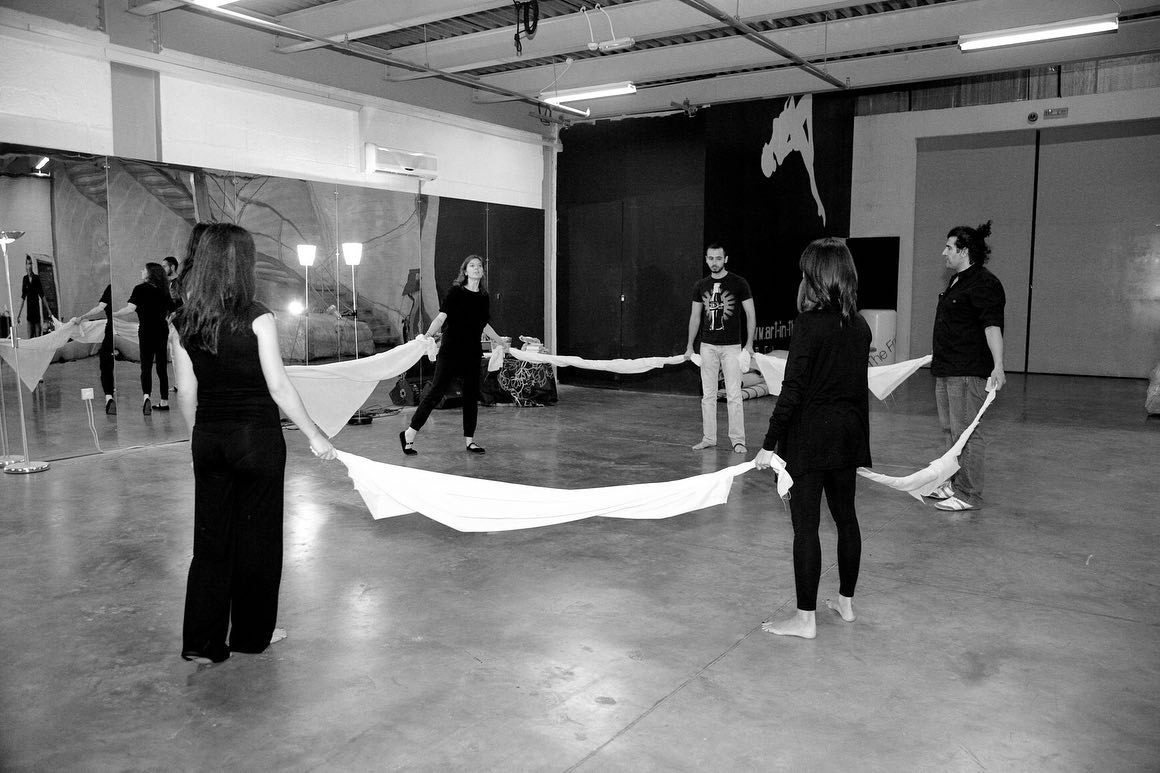
What’s your most exciting theatrical experience to date?
That’s hard for me to answer but I’d say it’s a tie between and one experimental community project one University production.
My favourite creation with the STAR TOO group was entitled “Is It Real”.
We made a giant cloth box into which the audience sat on two opposing sides, surrounded by projections all around them and with which the actors interacted. For example, a train scene by performer Shereen Saifuddin featured running landscape from the inside of a wagon projected on opposite walls while actors were positioned on a central runway between spectators.
In other sequences composed by group members, we engaged in shadow play from the exterior of the cloth box so that actors inhabit a virtual setting. Immersing the audience in our projections was an aim to place viewers in the middle of the action, therefore more directly part of the narrative, breaking down the barrier between an “us” and “them”.
In a proscenium arch setting, my favourite Sorbonne University Abu Dhabi production was an adaptation of Ionesco’s Rhinoceros, providentially scheduled close to French presidential elections that year. Deliberately rendered abstract, Ionesco’s text was used to reflect on media dis-information and mob-mentality.
Instead of too-literally turning into a “rhinoceros”, characters that slipped into the animal’s mind-set did so by “joining” a projection of a cluster of green hooded people. With the help of a choreographer and film student, we had filmed segments in rehearsals where hooded actors in formation performed a body-percussion routine based on a popular football chant.
That rhythm became a recurring motif throughout the piece when mob rule would rear its head in the story. I was thrilled to see the auditorium filled with students who could genuinely connect with the subject matter and feel engaged with the societal phenomena they were experiencing.
While I am not, by nature, a people-pleaser, the audience reaction in this case warmed my heart because it was an example of the way theatre provides an outlet for meaningful expression; one that creates a profound connection between people.
What’s been your biggest challenge to date?
At this very moment in time, the pandemic has turned most things on their head. Since space and in-situ practices are very dear to me, it feels like performance is literally boxed in and flattened by what is simply screen viewing. I have a love-hate relationship with technology to begin with. I love the concept of video-mapping as long as it is inherently part of creative movement and storytelling, not a facile slapped-on special effect.
For the most part, if I am watching something essentially designed to be viewed “flatly”, then I partly question my physical presence (apart, of course from the energy generated in a live moment etc.)
While I’ve worked in fabulous auditoriums, I have very much enjoyed what are called “found spaces”, such as warehouses for more experimental projects.
One of the things I love about theatre is that I can more or less choose a point of view-or at least have a variety of perspectives: am I seeing it from high, low, leveled, on a side? Now, the visual limitations imposed by viewing on a screen, it is a little frustrating. On top of that, not sharing a space with others, to physically think together “in” it, amputates the creative processes I usually aim for. Having said all that, “challenge” is a rather essential ingredient to experimental theatre; ours is served up to us on a platter today.
So, distancing and confinement are the perfect factors to work through, experiment with, and paradoxically embrace while overcome. I cannot predict the result yet. Maybe it will be along the lines of experimental video work but built with the tools of devised theatre (group work etc.); who knows? Now, there has obviously been a time when getting together physically isn’t feasible and it might happen again – but we have proved to ourselves that we can still create a work of theatre together, remotely.
We could have chosen to wait it out but we opted for action this spring 2020. This has been the opportunity to push the boundaries of what is usually perceived as experimental.
Being a little group with basically zero means, and now distant from one another, just might be what has pushed us to innovate.
Why does the world need theatre, especially now?
In a world of virtual and physical distancing, theatre has been a place where human beings can come together and their presence as an integral part of the phenomena. The word theatre originates from the Ancient Greek word theatron and Latin theatrum, to designate a place in which to “observe”. So, anywhere can be a theatre; hence also the Shakespearian adage from As You Like It: “All the world’s a stage”.
Throughout history, theatre has been a place in which to revel and ponder, basically addressing the human condition we can all connect with. I argue that even in 9,500 BC in the Neolothic era, tribe members designated as “shamans” were performing and storytelling to keep the fabric of society together.
A story, an act–this has always been part of the human experience. Somewhere along our evolution, we were endowed with the capacity to think abstractly, creatively, and to believe.
This links up to hope. Even when we might say something is hopeless, it is not bereft of hope because “wishing” is in there someplace. It doesn’t make a whole lot of sense to wish for the worse to survive, so let’s say that biological imperative leads us to hope for the best in most cases.
Hope finds a home in theatre. It is the manifestation of our humanity and without it, we might not be able to see very much…
I think we’d all agree with that, especially in the face of the current crisis. So, one last question…What’s next?
The Zoom experiment gave way to a wonderful troupe we might end up calling Khayal Masrah, meaning imagination theatre in Arabic. All their hard work could result in an original creation by an amazing collective. It’s something we can look to either publish or perform, one blessed day. If we can keep working on it, we will still think through our bodies and stretch our imagination to create something out of the box.
Acting classes could be seeing the light of day again as places re-open, carefully of course. With faith that we can heal sooner than later, I look forward to being able to share the magic of theatre again.

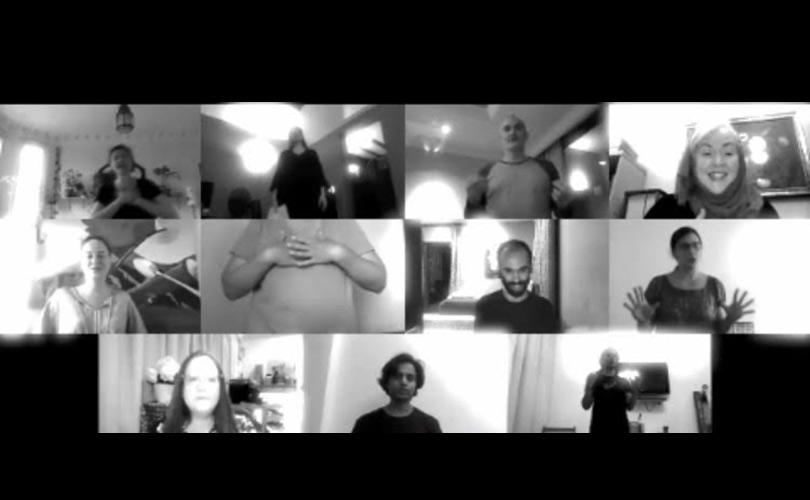

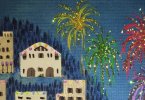
Leave a Comment